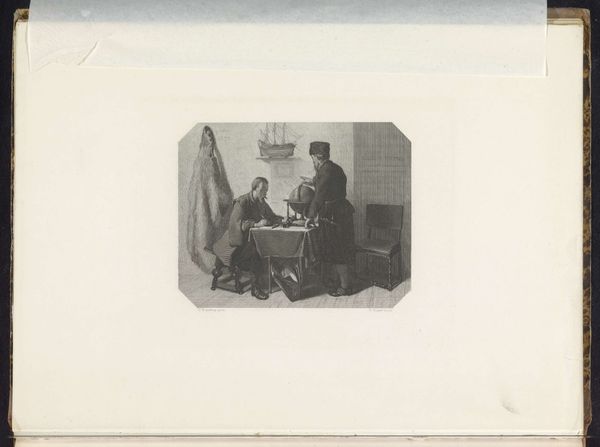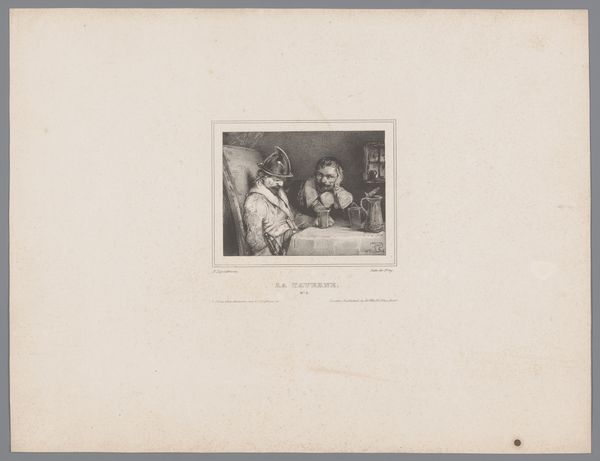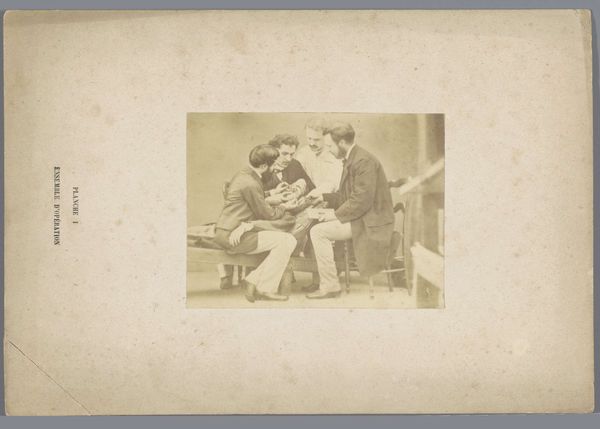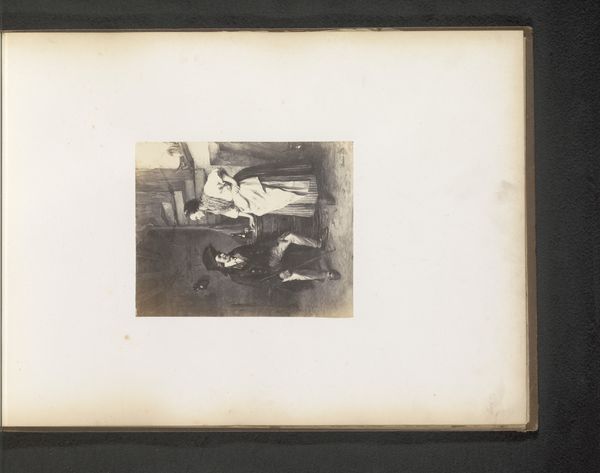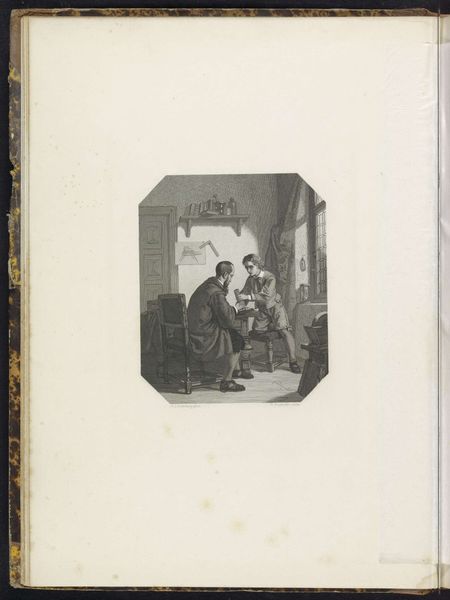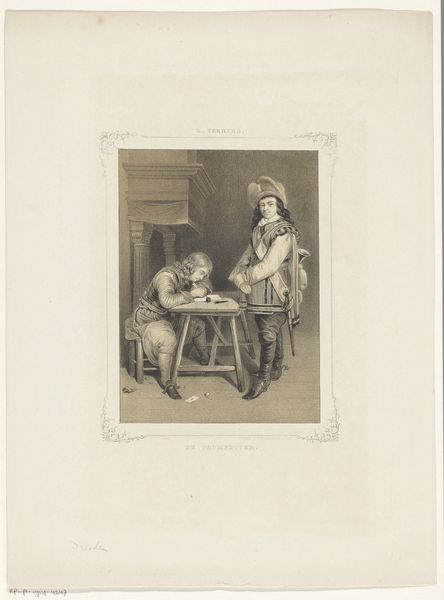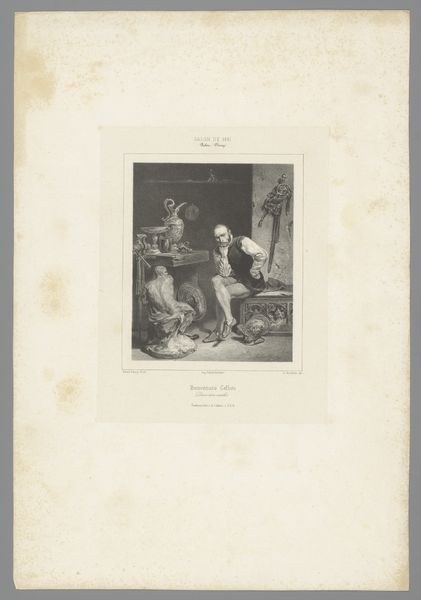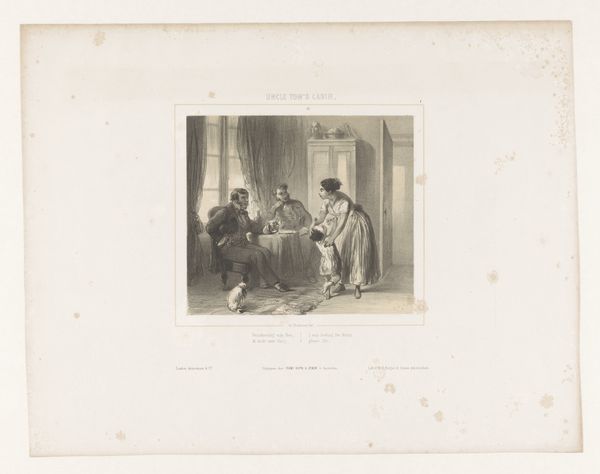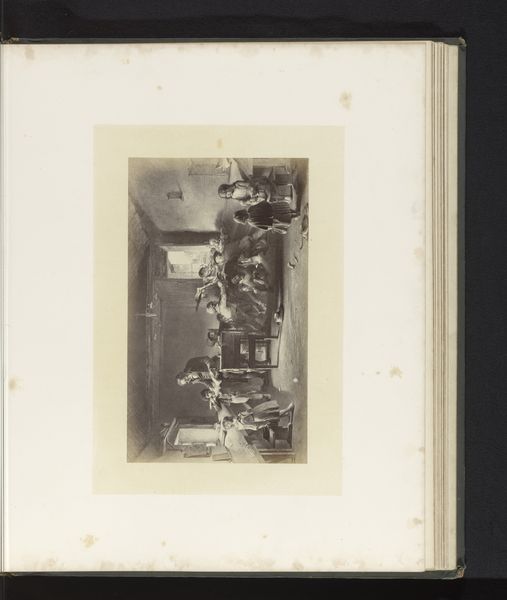
photography, gelatin-silver-print
#
portrait
#
photography
#
gelatin-silver-print
#
genre-painting
#
italian-renaissance
#
realism
Dimensions: height 404 mm, width 307 mm
Copyright: Rijks Museum: Open Domain
Editor: This gelatin silver print from around 1870, by Giorgio Sommer, is titled "Tafereel met vier mensen die spaghetti eten in Napels, Italië", which translates to "Scene with four people eating spaghetti in Naples, Italy." It seems to romanticize poverty. What strikes you most about it? Curator: What I find immediately interesting is the staged nature of the photograph, reflecting the market for tourist imagery at the time. This wasn't documentary photography in the modern sense; instead, Sommer, like many others, catered to a demand for picturesque scenes of Italian life. The apparent realism is a performance, mediated by the photographer's intention and the expectations of the audience. How do you think this staged aspect affects the authenticity, or truth, of the image? Editor: I guess it makes me question the power dynamics. Sommer, a German photographer, capturing Italians... it makes me wonder how much agency these individuals actually had in how they were represented. Was this a true representation of their lives, or simply a commercial product? Curator: Exactly! These genre scenes reinforced certain stereotypes, appealing to the northern European gaze. And consider the title itself – "Scene with four people eating spaghetti…" It’s descriptive, almost anthropological. It distances the viewer, framing these people as subjects for observation rather than individuals with their own stories. Where do you think the photograph was intended to be viewed? Editor: Probably in albums or as souvenirs for tourists back home. So it becomes this curated experience of Italy, carefully packaged and consumed. It's like the invention of a tradition, a performative act solidifying ideas about Italian culture for outsiders. Curator: Precisely. And understanding the image's function within this specific historical and commercial context changes how we interpret its realism. We move beyond just seeing spaghetti to understanding the market for spaghetti, if you will, or more accurately, the market for this type of "authentic" Neapolitan imagery. Editor: This reminds me that photographs, even seemingly candid ones, are always constructions, shaped by social forces and economic realities. Curator: And by understanding those forces, we can see past the surface to analyze the underlying politics of the image.
Comments
No comments
Be the first to comment and join the conversation on the ultimate creative platform.
